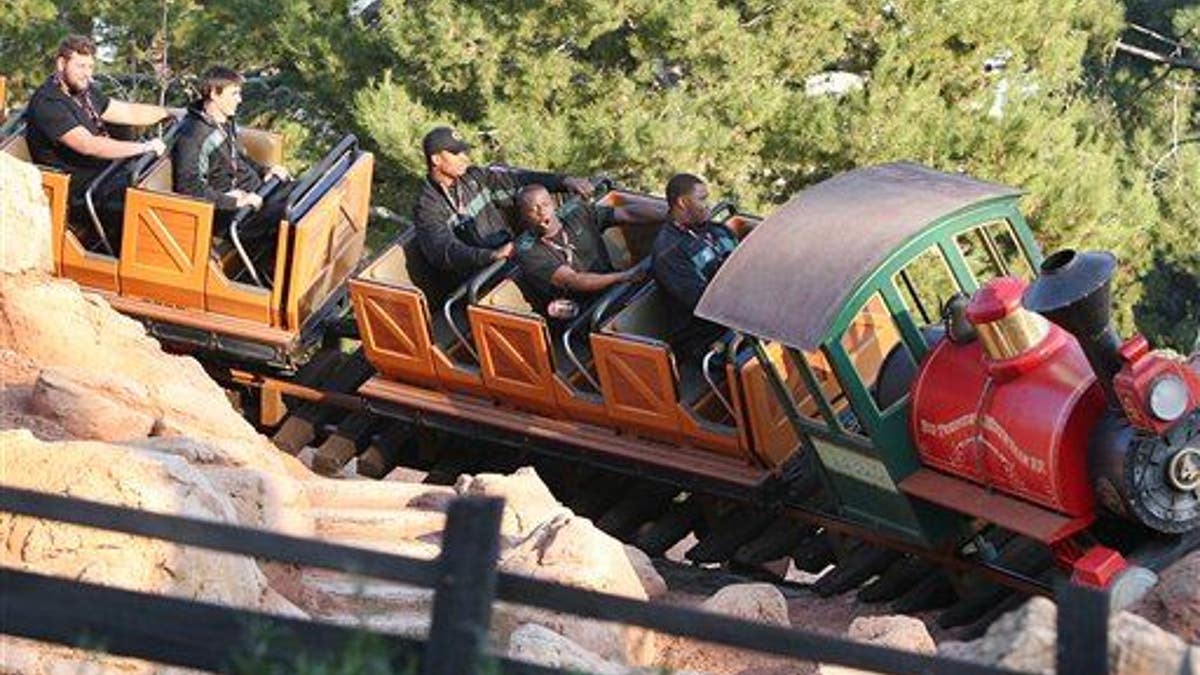
Riding Disney's Big Thunder Mountain Railroad (California's version shown here) could help pass kidney stones, scientists say. (AP Photo/Disneyland, Paul Hiffmeyer)
Got a kidney stone? Consider a trip to Disney. That's the takeaway from new research out of Michigan State University that found taking a spin on a "medium-intensity" coaster may aid in the passing of the pesky mineral masses, with minimal discomfort, the Los Angeles Times reports.
The study published in the Journal of the American Osteopathic Association found that taking the rear seat on a roller coaster resulted in a kidney stone passing almost 64 percent of the time; sitting in the front seat gave a more modest 17 percent passage rate.
How the experiment itself came to pass: The researchers' interest was piqued after they heard from several patients that their stones had passed after riding Disney's Big Thunder Mountain Railroad in Florida.
More From Newser
Live Science and Wired describe the creative way scientists replicated an actual person with kidney stones riding a roller coaster. First they made a 3D silicone kidney, complete with three kidney stones of various sizes—4.5, 13.5, and 64.6 cubic millimeters—encased within the model in urine.
The fake kidney went into a backpack, then went for 20 rides on the Disney coaster, which reaches speeds of 35mph. "Many people in the United States probably live within a few hours' drive of an amusement park containing a roller coaster with features capable of dislodging calyceal renal calculi," the researchers write, though they note the smaller the stone, the better, per NBC News.
But there may be a sweet spot when it comes to the purge: One of Disney's other roller coasters, Space Mountain, with a top speed of 28.7mph, didn't have the same effect.
(Climate change may be spurring stones.)
This article originally appeared on Newser: Ride a Roller Coaster, Pass Some Kidney Stones
